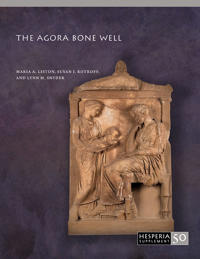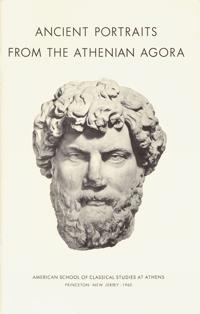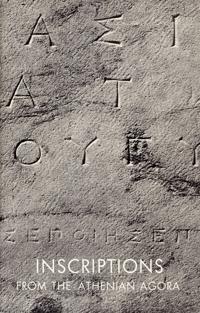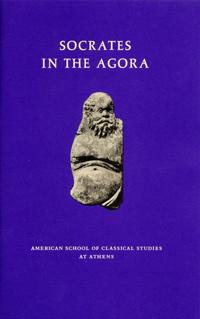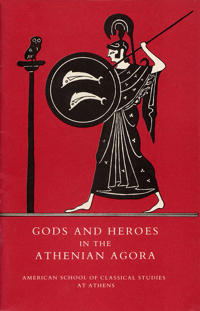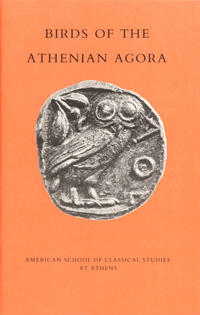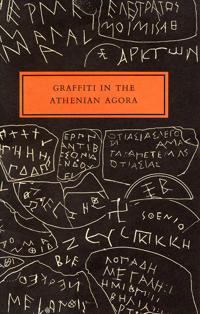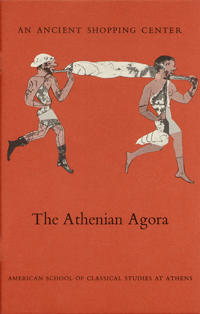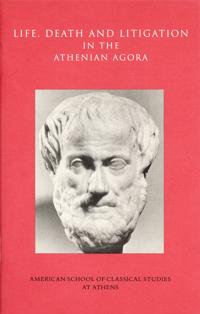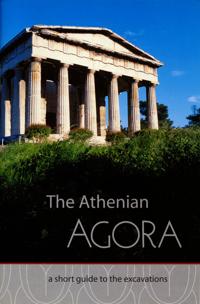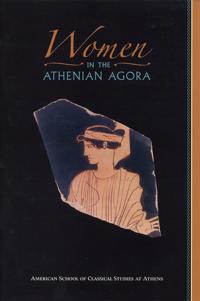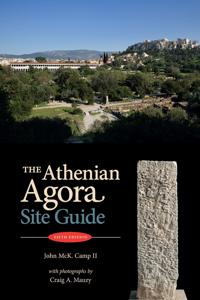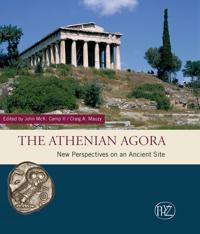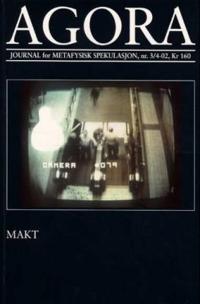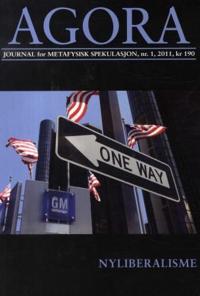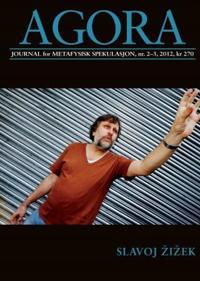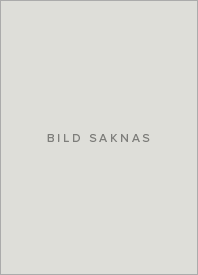The New Empire of Debt : The Rise and Fall of an Epic Financial Bubble , 2n (Inbunden)
avWilliam Bonner, Addison Wiggin, Agora
ISBN: 9780470483268 - UTGIVEN: 2009-08-31A Maniac Commodity Trader's Guide To Making A Fortune: A Not-So-Crazy Roadm (Inbunden)
avKevin Kerr, Agora
ISBN: 9780471771906 - UTGIVEN: 2007-03-31Seven Years to Seven Figures: The Fast-Track Plan to Becoming a Millionaire (Inbunden)
avMichael Masterson, Agora
ISBN: 9780471786757 - UTGIVEN: 2006-10-31Automatic Wealth for Grads... and Anyone Else Just Starting Out (Inbunden)
avMichael Masterson, Agora
ISBN: 9780471786764 - UTGIVEN: 2006-05-31Power and Persuasion: How to Command Success in Business and Your Personal (Inbunden)
avMichael Masterson, Agora
ISBN: 9780471786771 - UTGIVEN: 2005-11-30The Agora Bone Well (häftad)
ISBN: 9780876615508 - UTGIVEN: 2018-11Even though Dorothy Thompson excavated the Agora Bone Well in 1938, the well and its remarkable finds have never been fully studied until now. Located outside the northwest corner of the Athenian Agora and dating to the second quarter of the 2nd century B.C., the well contained the remains of roughl[...]
Ancient Portraits from the Athenian Agora (Pocket)
avEvelyn B. Harrison
ISBN: 9780876616055 - UTGIVEN: 1960-06Inscriptions from the Athenian Agora
ISBN: 9780876616109 - UTGIVEN: 1966-06Many types of written records are found in the Agora, and this booklet presents a sample of the more than 10,000 inventoried inscriptions written on stone. The texts illustrated include diplomatic agreements, commemorative plaques for athletic victories, records of court judgements, boundary stones [...]
Socrates in the Agora
ISBN: 9780876616178 - UTGIVEN: 1978-06As far as we know, the 5th-century B.C. Greek philosopher Socrates himself wrote nothing. We discover his thoughts and deeds entirely through the writings of his followers, disciples who accompanied him on his walks through the Athenian Agora and engaged in dialogue with him in the Stoa Basileios. R[...]
Gods and Heroes in the Athenian Agora
ISBN: 9780876616239 - UTGIVEN: 1980-12Religion played a part in almost every aspect of civic life, so shrines, temples, altars, and dedications are conspicuous at almost every turn during a visit to the Athenian Agora. The author of this booklet shows where and how the major Olympian gods were worshipped, and then turns his attention to[...]
Birds of the Athenian Agora
ISBN: 9780876616277 - UTGIVEN: 1985-01As well as the Little Owl or glaux, so often seen accompanying the goddess Athena, many other birds played an important role in Greek art and symbolism. This booklet describes the ways in which the Greeks viewed birds, from useful hawks and fowl to exotic parakeets and peacocks. Some of the birds mo[...]
Graffiti in the Athenian Agora
ISBN: 9780876616338 - UTGIVEN: 1988-06Like fragments of overheard conversations, the thousands of informal inscriptions scratched and painted on potsherds, tiles, and other objects give us a unique insight into the everyday life of the Athenian Agora. Some are marks of ownership, or the notes of merchants, but many are sexual innuendos,[...]
An Ancient Shopping Center (Agora Picture Book 12)
ISBN: 9780876616352 - UTGIVEN: 2001-12As well as being a political center, the Agora was the focus of a noisy and varied commercial life. This booklet illustrates the archaeological, documentary, and pictorial evidence for such diverse trades as shoe-making, fishmongering, weaving, and the manufacture of luxury goods and perfumes. Shopp[...]
Life, Death, and Litigation in the Athenian Agora (Pocket)
avMabel Lang
ISBN: 9780876616376 - UTGIVEN: 2001-12Horses and Horsemanship in the Athenian Agora
ISBN: 9780876616390 - UTGIVEN: 1998-11Full-colour booklet illustrating the many role played by the horse in Greek life, from myth and early history to its significance as a mark of status and its use in war, transport, games and festivals.[...]
The Athenian Agora (Häftad)
avJohn M. Camp
ISBN: 9780876616437 - UTGIVEN: 200312Each monument still visible on the site is described in turn, and helpful maps and plans are a particular feature of this edition. Birthplace of democracy, the Agora remains one of the most fascinating archaeological sites in the world, and this is the essential companion for any visitor.[...]
Women in the Athenian Agora (Pocket)
avSusan I. Rotroff, Robert D. Lamberton, Susan I. Rotroff
ISBN: 9780876616444 - UTGIVEN: 2006-09Using evidence from the Athenian Agora the authors show how objects discovered during excavations provide a vivid picture of women's lives. The book is structured according to the social roles women played - as owners of property, companions (in and outside of marriage), participants in ritual, craf[...]
The Athenian Agora (Pocket)
avJohn McK., II Camp, Craig A. Mauzy, John McK., II Camp
ISBN: 9780876616574 - UTGIVEN: 201004This useful guide to the archaeological remains viewable in the civic and commercial center of ancient Athens is an essential companion to the interested visitor, or to students of the topography of the classical city. A foldout map provides an overview of the site, keyed to descriptions and plans o[...]
Agora. Nr. 1-2 2007; journal for metafysisk spekulasjon (Pocket)
ISBN: 9788203192555 - UTGIVEN: 2007-01Dette temanummeret er viet Bob Dylan med blant annet gjendiktninger av Dylans tekster.
Agora. Nr. 3/4-2002; journal for metafysisk spekulasjon (Pocket)
avJeffrey Kennedy
ISBN: 9788203199042 - UTGIVEN: 2002Dette temanummeret om makt tar utgangspunkt i bøkene fra makt- og demokratiutredningen 1998-2003. Maktutredningen publikasjoner blir drøftet på grunnlag av vitenskapelige kriterier. Har opplysninger om bidragsyterne.[...]
Agora. Nr. 1 2011; journal for metafysisk spekulasjon (Pocket)
ISBN: 9788203350399 - UTGIVEN: 2011Dette temanummeret er viet nyliberalisme.
Agora. Nr. 2-3 2012; journal for metafysisk spekulasjon (Pocket)
ISBN: 9788203354311 - UTGIVEN: 2012Agora 3; lærerens bok (Pocket)
avKari Bech, Tor Gunnar Heggem, Kåre Kverndokken
ISBN: 9788205326330 - UTGIVEN: 2006-01Boka har en innledende del hvor du blant annet finner en presentasjon av læreverket, undervisningstips og årsplanlegger. Den metodiske delen har referanser til grunnbok og øvingsbok, og kopieringsoriginaler.[...]






